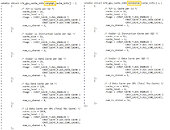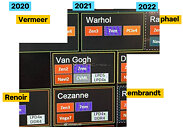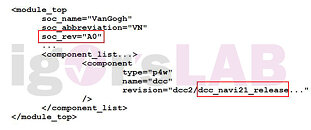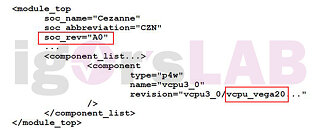
AMD "Ryzen Z2 A" APU Could Utilize Older "Van Gogh" RDNA 2 iGPU
Two weeks ago, unannounced APU model names—"Ryzen AI Z2 Extreme" and "Ryzen Z2 A"—were leaked by Hoang Anh Phu. AMD introduced its Ryzen Z2 series at CES 2025; officially consisting of three options: Z2 Extreme, Z2 and Z2 Go. Technical make up of the two alleged new additions remained a mystery, but watchdog theorizations positioned the rumored "Ryzen AI Z2 Extreme" as the (expanded) lineup's flagship—likely due to the enablement of an integrated XDNA 2 NPU. The vanilla Z2 Extreme APU is a handheld gaming-oriented product; existing as a spin-off from Team Red's "Strix Point" mobile processor design—utilizing Zen 5 and RDNA 3.5 technologies. By similar deduction, the leaked "Ryzen Z2 A" SKU was viewed as a "Hawk Point" (Zen 4 + RDNA 3) processor, possibly with a "switched on" AI aspect. Earlier today Hoang Anh Phu provided a new follow-up claim—this morning's social media post proposes a return to "Van Gogh" pastures.
The not-yet-official "Ryzen Z2 A" APU design could be derived from the Steam Deck's Zen 2 + RDNA 2 package. Valve and AMD's collaboration resulted in the "Van Gogh" custom chip design—also known as "Aerith"—debuting back in 2022. A die shrink—from 7 nm to 6 nm—arrived in the form of Steam Deck OLED's "Sephiroth" chipset (2023). Phu's latest prediction places the "Ryzen Z2 A" closer to the already unveiled Ryzen Z2 Go, graphics technology-wise. As discussed in the past, this entry-level "Phoenix 2" solution sports an RDNA 2 iGPU, albeit paired with Zen 3 processor cores. The Ryzen Z2 Go chipset powers Lenovo's Legion Go S handheld gaming PC—in the near future, this offering will be made available with two different operating system options: Windows 11 or SteamOS. As extrapolated from Phu's fresh prediction, similar-ish lower end devices—prepped with Valve's proprietary OS—could arrive with "Ryzen Z2 A" APUs onboard.
The not-yet-official "Ryzen Z2 A" APU design could be derived from the Steam Deck's Zen 2 + RDNA 2 package. Valve and AMD's collaboration resulted in the "Van Gogh" custom chip design—also known as "Aerith"—debuting back in 2022. A die shrink—from 7 nm to 6 nm—arrived in the form of Steam Deck OLED's "Sephiroth" chipset (2023). Phu's latest prediction places the "Ryzen Z2 A" closer to the already unveiled Ryzen Z2 Go, graphics technology-wise. As discussed in the past, this entry-level "Phoenix 2" solution sports an RDNA 2 iGPU, albeit paired with Zen 3 processor cores. The Ryzen Z2 Go chipset powers Lenovo's Legion Go S handheld gaming PC—in the near future, this offering will be made available with two different operating system options: Windows 11 or SteamOS. As extrapolated from Phu's fresh prediction, similar-ish lower end devices—prepped with Valve's proprietary OS—could arrive with "Ryzen Z2 A" APUs onboard.












